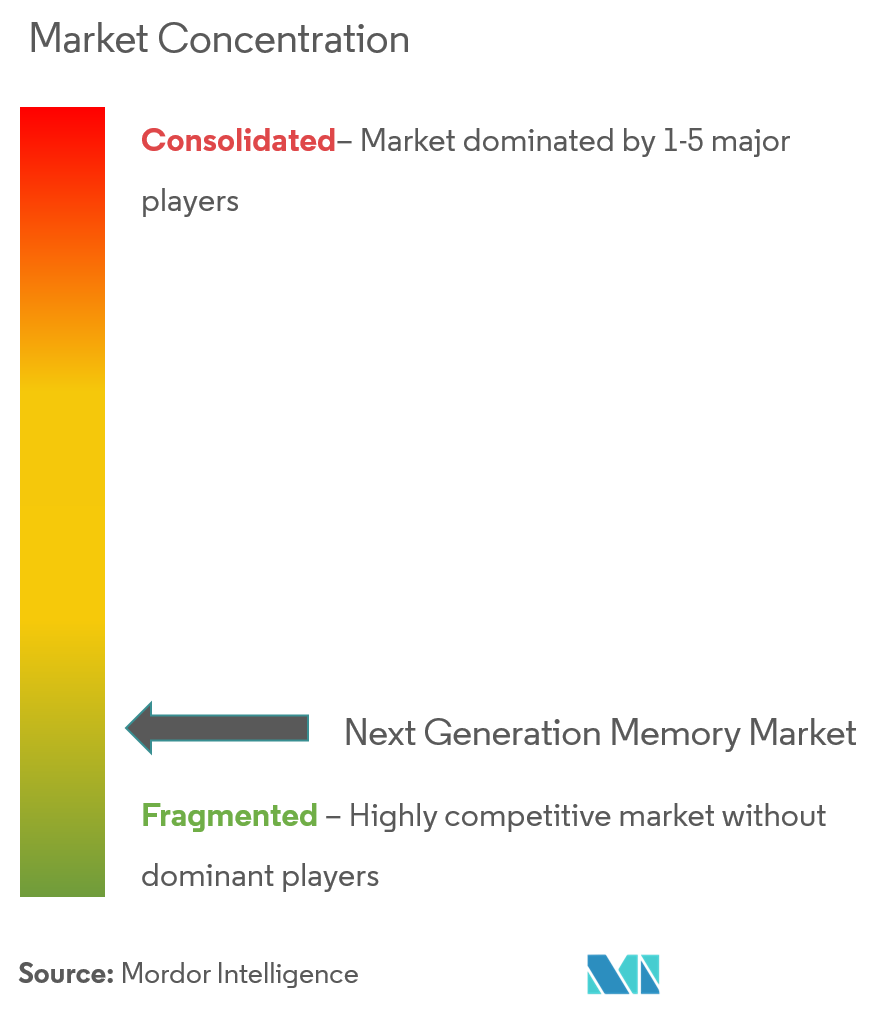Next Generation Memory Industry Overview
The Next-Generation Memory Market is fragmented, as the market is highly competitive and consists of several major players. The competitive rivalry in this industry primarily depends on sustainable competitive advantage through innovation, levels of market penetration, and the power of competitive strategy. Since the market is capital-intensive, the barriers to exit are also high. Some of the key players in the market are Intel Corporation, Toshiba Corporation, Fujitsu Ltd., etc.
- July 2023: Samsung Electronics has announced the successful development of the groundbreaking Graphics Double Data Rate 7 (GDDR7) DRAM. This remarkable achievement will primarily focus on validating its effectiveness in next-generation systems for selected customers this year. Such a development is expected to contribute significantly to the growth of the graphics market and further establish Samsung's position as a leading innovator in this field. Notably, Samsung's GDDR7 exhibits an impressive bandwidth of 1.5 terabytes per second (TBps), surpassing the performance of GDDR6 by 1.4 times, and offers an enhanced speed per pin of up to 32 Gbps.
- May 2023: Micron Technology has announced its intention to invest up to JPY 500 billion (USD 3.6 billion) in Japan over the next few years, with the support of the Japanese government to rise its business in next-generation memory chips. This strategic move reflects the Japanese government's determination to revitalize its semiconductor industry and enhance the country's chip supply chain. It also aligns with their efforts to introduce advanced chip technology to Japan, particularly in light of the growing tensions between the United States and China.
Next Generation Memory Market Leaders
-
Intel Corporation
-
Toshiba Corporation
-
Fujitsu Ltd
-
Honeywell International Inc.
-
Micron Technology Inc.
- *Disclaimer: Major Players sorted in no particular order



